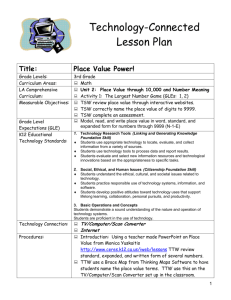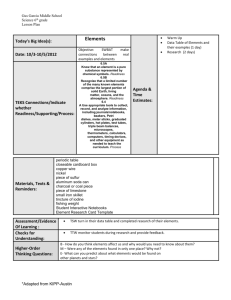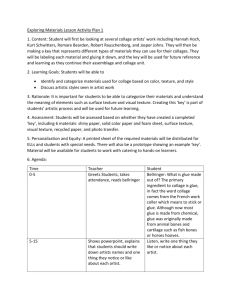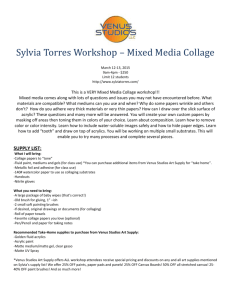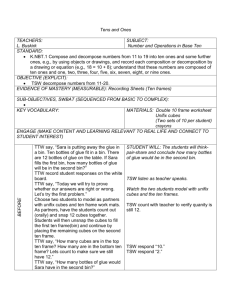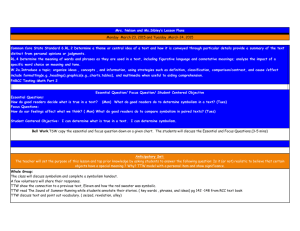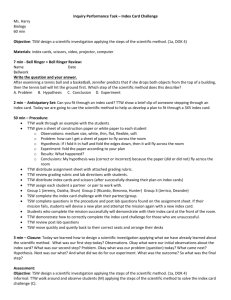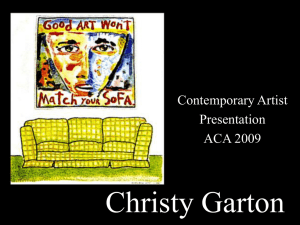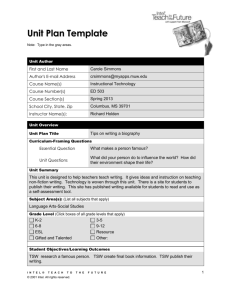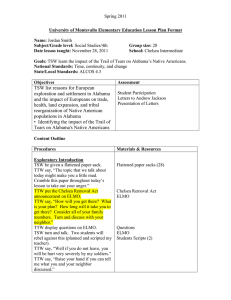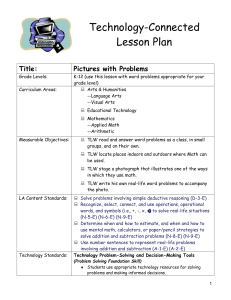Printmaking Lesson Plan 4
advertisement
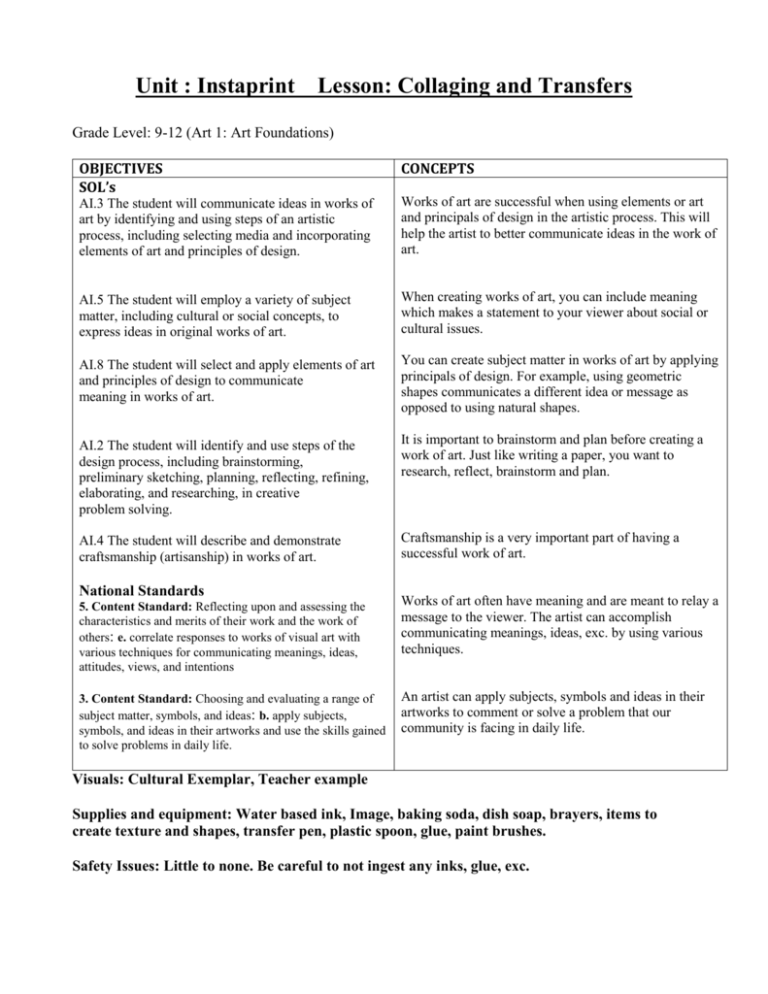
Unit : Instaprint Lesson: Collaging and Transfers Grade Level: 9-12 (Art 1: Art Foundations) OBJECTIVES SOL’s CONCEPTS AI.3 The student will communicate ideas in works of art by identifying and using steps of an artistic process, including selecting media and incorporating elements of art and principles of design. Works of art are successful when using elements or art and principals of design in the artistic process. This will help the artist to better communicate ideas in the work of art. AI.5 The student will employ a variety of subject matter, including cultural or social concepts, to express ideas in original works of art. When creating works of art, you can include meaning which makes a statement to your viewer about social or cultural issues. AI.8 The student will select and apply elements of art and principles of design to communicate meaning in works of art. You can create subject matter in works of art by applying principals of design. For example, using geometric shapes communicates a different idea or message as opposed to using natural shapes. AI.2 The student will identify and use steps of the design process, including brainstorming, preliminary sketching, planning, reflecting, refining, elaborating, and researching, in creative problem solving. AI.4 The student will describe and demonstrate craftsmanship (artisanship) in works of art. National Standards It is important to brainstorm and plan before creating a work of art. Just like writing a paper, you want to research, reflect, brainstorm and plan. Craftsmanship is a very important part of having a successful work of art. 5. Content Standard: Reflecting upon and assessing the characteristics and merits of their work and the work of others: e. correlate responses to works of visual art with various techniques for communicating meanings, ideas, attitudes, views, and intentions Works of art often have meaning and are meant to relay a message to the viewer. The artist can accomplish communicating meanings, ideas, exc. by using various techniques. 3. Content Standard: Choosing and evaluating a range of subject matter, symbols, and ideas: b. apply subjects, symbols, and ideas in their artworks and use the skills gained to solve problems in daily life. An artist can apply subjects, symbols and ideas in their artworks to comment or solve a problem that our community is facing in daily life. Visuals: Cultural Exemplar, Teacher example Supplies and equipment: Water based ink, Image, baking soda, dish soap, brayers, items to create texture and shapes, transfer pen, plastic spoon, glue, paint brushes. Safety Issues: Little to none. Be careful to not ingest any inks, glue, exc. TIME TEACHING PROCEDURE AND ASSESSMENT TEACHER PROCEDURE STUDENT PROCEDURE Motivation: Printmaking Collage Video Anticipatory Set: 1) What is collaging? 2) When transferring what kind of printer ink do you need? Demonstration TTW introduce collaging and transferring by demonstrating how to properly apply each technique while maintaining a well crafted print. TTW demonstrate how to properly collage using the sunburst technique to apply paint. (Remember to remind students how to properly clean brushes when using glue) 1) (To Glue) The assemblage of different forms creating a new whole. 2) A printer with toner. TSW learn how to properly collage and transfer while maintaining craftsmanship and theme. TSW participate in any class discussion during teacher demonstration. Any question the student has about the process can be asked at this time. TTW demonstrate how to properly transfer an image to print. Transfers can be done by sections depending on the size of the image. TTW walk around assisting students with any problems or questions. TTW have students write down in their planner the homework assignment: Write a 1 page artist statement double spaced, size 12 font explaining techniques (using vocabulary learned in class) and explain their theme or message. TSW add a collage and transfer to at least one of their works. Students will turn in one piece using all three techniques. ASSESSMENT Formative – describe (walking around) Summative – describe (test) Closure: 1) What two processes did we learn about today? What process did we learn about last class? 1) Transfering and collaging. Last class we learned about trace monotypes. 2) Why should you transfer in sections if you have a large image? 2) You should transfer in sections if you have a large image because the ink might dry out and created a pixilated or poor transfer. 3) What is your homework? When is it due? 3) Write a 1 page artist statement, due next class.

